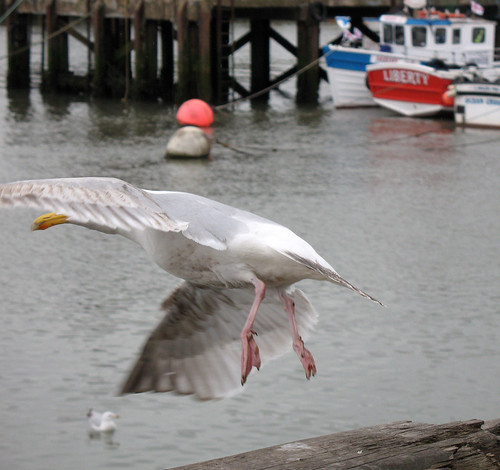Those of you who followed my weekend in York closely will recall my personal thoughts on Bridlington. The town does however does have some interesting history which is described briefly on Wiki:
The origins of the habitation of Bridlington are unknown but can be traced back to ancient times. The nearby Dane’s Dyke on Flamborough Head, a 2.5-mile (4 km) long man made dyke dates back to the Bronze Age.[4] Some writers believe that Bridlington was the site of a Roman station. A Roman road can be traced into the town and Roman coins have been found in the town.[5]
The earliest written evidence of Bridlington is located in the Domesday Book. It records that “Bretlinton” was the head of the Huntow Hundred and was held by Earl Morcar before it passed into the hands of William the Conqueror by the forfeiture.[5] The survey also records the effect of the Harrying of the North as the annual value of the land had decreased from £32 in the time of Edward the Confessor to eight shillings at the time of the survey and comprised:
“two villeins, and one socman with one and a half Carucate. The rest is waste.”[5]
The land was given to Gilbert de Gant, nephew of King Stephen, in 1027.[5] His eldest son, Walter de Gant, later founded an Augustinian priory on the land in 1133 which was confirmed by King Henry I in a Charter.[6] Several succeeding kings confirmed and extended Walter de Gaunt’s gift: King Stephen granting in addition the right to have a port; King John granted the prior permission to hold a weekly market and an annual fair in 1200. Henry VI granted permission for three annual fairs on the Nativity of Mary, and Deposition of and the Translation of Saint John of Bridlington in 1446.[5] In 1415 Henry V visited the priory to give thanks for victory at the Battle of Agincourt.[7] The town began to be developed around the site of the priory as it grew in importance and size.
After the Dissolution of the Monasteries, the manor remained with the crown until 1624 when Charles I granted it to Sir John Ramsey, who had recently been created the Earl of Holderness.[5] In 1633, Sir George Ramsey sold the manor to 13 inhabitants of the town on behalf of all the tenants of the manor. In May 1636, a deed was drawn up empowering the 13 men as Lords Feoffees or trust holders of the Manor of Bridlington.
In 1643 Queen Henrietta Maria landed at Bridlington with troops to support the Royalist cause in the English Civil War before going on to York, which then became her headquarters.
Even more detail can be found on Genuki, or you could just enjoy the photographs ![]()










A good catch of flying seagulls, in both photos, CP.
Thanks I was quite surprised how well the photos turned out especially as it was a dull day.
I was quite surprised how well the photos turned out especially as it was a dull day.
Wow, CP, you made the place sound very interesting. I went frequently in my youth for those special weekends but never got around to seeing it.
I think the history I posted mad it sound much more interesting than I found it when I was visiting I much prefer the seaside towns that are further up the coast
I much prefer the seaside towns that are further up the coast 
Very close to home, that one is.
And to my ancestral home
Oh Bridlington is just up the road from us – well about an hour away on the motorbike. It is one of our facourite places to visit. There is a 60’s cafe there which is just amazing! I have mentioned it several times on my old blog so do check it out!
I should have consulted you before I visited there. I do remember you mentioning the 60’s cafe but I didn’t realise it was in Bridlington!!
I love the seagull. I love how the bird is in focus. I think you did a great job considering how dull it was. I find it really hard to be inspired for photos on the gray days.
I was quite surprised that he came out so well. I do have him standing on the wall before he took off too.